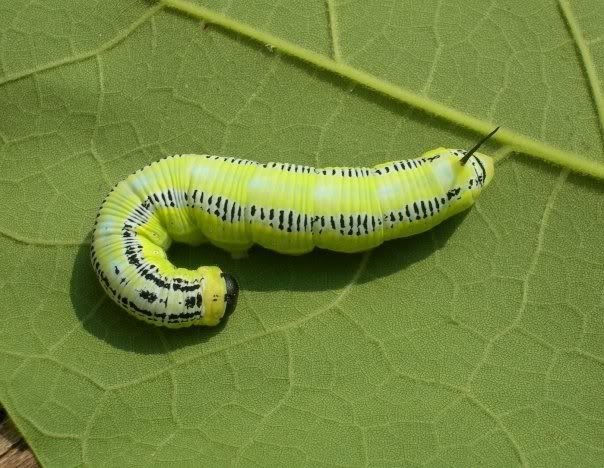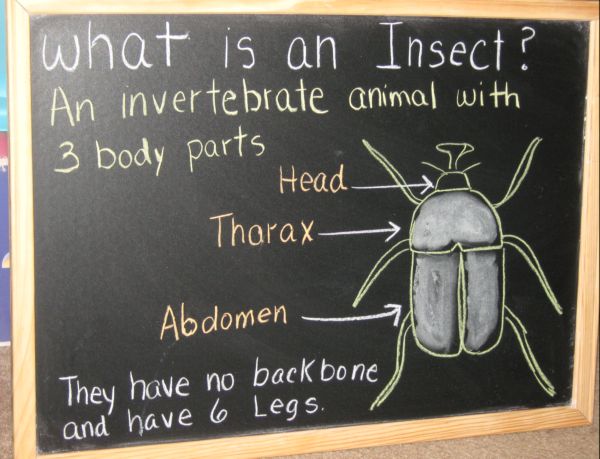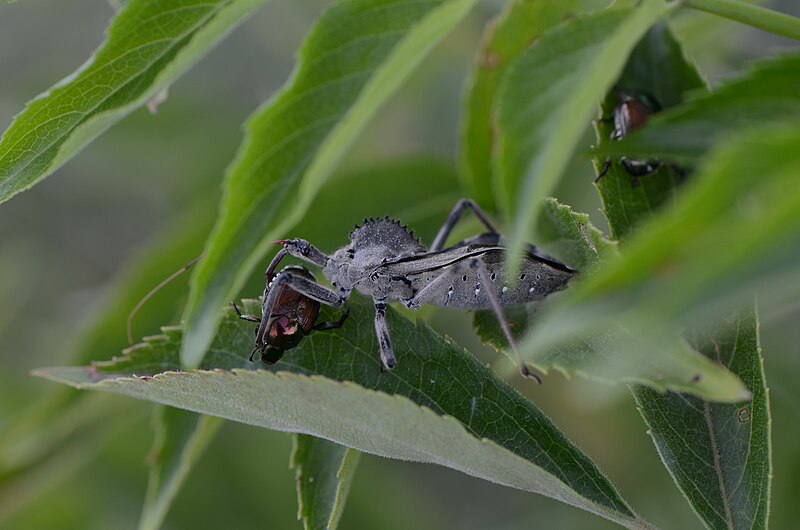How to Identify Pests and Control them Naturally with Beneficial Bugs, Trap Crops, and More
Consider this article “Sustainable Pest Control 101.” Once you’ve read this, you’ll be an expert at dealing with insects on the farm or in the garden.
One of the classes I taught at Saturday’s SC Organic Growers Conference was Insect Garden Ecology. This is a topic that overwhelms growers everywhere… people often tell me they just aren’t good at remembering all the bugs that visit their garden or how to deal with them.
To which I say “who is?” I’ve talked to entomologists that can tell you the detailed taxonomy of a micro-moth but have no idea when they see a striped cucumber beetle. When there are over 1 million named species of insects and more than 100,000 of them reside in North America, your goal shouldn’t be to know this stuff offhand.
So what do you do?
Step One: Correctly identify your bug
First, make sure it is really an insect. You won’t get far if it is really a spider, mite, opilione, mollusk, worm, pillbug, millipede, centipede, scorpion, or other small non-insect.
Not knowing for sure which insect means you could be killing a beneficial bug that had nothing to do with your problem. This beneficial assassin bug looks a lot like pesky squash bugs. Can you tell this potato bug pupa from a ladybug’s? What about these rove beetles controlling your slugs to this earwig chewing your crops? Lots of good bugs look like bad ones.
Maybe you have the right pest but its method of feeding means that topical sprays won’t work to control it. Or you’re using a strain of bt pesticide that attacks caterpillars instead of beetle grubs.
Try to learn broader categories of insects (like butterflies, beetles, flies, crickets, etc.) to help you narrow down your search. Eventually, you may be able to recognize more specific groups of insects like the giant silk moths (saturniidae). You’ll remember the ones you see the most often. If you know that white C-shaped grubs are nearly always scarabs, it can help you narrow down your search so you can decide if your grubs are Japanese beetles (pest scarabs that eat many food and ornamental crops) or bess/patent leather beetles (beneficial scarabs that turn wood into compost).
Not sure? You can ask online at many bug identification forums. Try to be as specific as possible and include information like:
- A photo of the bug, possibly with a coin as a size reference (squished bugs are unlikely to be recognizable)
- Where you found it — if it was on a plant, what kind? Was it daytime, nighttime, what time of year? Where are you located on the Earth?
- Any other observations you may have had. Some bugs are just sitting there, but others might be doing something interesting.
Here are some places you can ask:
If you want to try and find it on your own, this cool website has a bugfinder database where you can plug in the primary body color, secondary body color, number of legs, and state you found the insect in to see a narrowed list of possibilities.
Still stumped? Take a sample to your local extension office.
Once you’ve looked up an insect in your garden, you’re a lot more likely to know it on sight when it shows up again. When you’re amazed because your neighbor can tell you the critter hanging on your screened door is a leaf-footed bug, it’s probably because he had to look up what was eating his tomatoes 3 years ago. Few people just read a book and remember all the insects they saw in it — insect knowledge is accumulated over years, one bug at a time.
Which isn’t to say books aren’t useful. The best field guide for home insect ID that I know of is Garden Insects of North America by Whitney Cranshaw. That said, I tend to snap up every insect field guide I find.
Which brings us to…
Step Two: Decide if you need to do anything about it
Guess what? The most effective control of pest insects are beneficial insects! After all, less than 3% of insect species are pests. If you plan your garden to attract beneficial insects then you may not need to bother with pests when they show up. I usually employ a “‘watch and wait” policy at Appalachian Feet. Sometimes I watch pretty closely — especially if the plant under attack is fragile and I know the pest can multiply fast. I’ll step in if things are looking dire, but even organic spraying is very much a last resort.
It may be hard to believe that predatory insects can control the pests in your garden. Especially if you (or your neighbors) were using chemicals and/or monoculturing in your yard (remember, a lawn counts as a monoculture). Pest insects multiply much faster than predatory ones, so it sometimes takes as much as 3 years for the predator population to catch up and balance the ecosystem. This is why beginners to organics are often overwhelmed with pests at first.
Fortunately, you can speed up the process by planting flowers to attract beneficial insects. Polyculture garden or farms that provide wildlife food and shelter require less work from the grower to keep imbalances under control. Beneficial insects are small, but they’re still wildlife. To attract them as plant protectors, any flower with a shallow nectary will do. However, some are more effective than others. An example is the carrot family — the flowers of dill and fennel are particularly attractive to beneficial wasps. Learn how to use them as beacons near crops that are vulnerable to caterpillar pests.

Photo Caption: Flowers aren’t gratuitous — you need them bringing in the good bugs to get the healthiest crops!
Here is a list of other proven beneficial insect plants. Tuck the shorter ones among your vegetables (small plants won’t compete much for light and nutrients) and put the larger ones around your garden border.
Beneficial Insect Flowers:
- Any flowering plant native to your area — native plants are the best adapted to your local fauna
- Carrot family (fennel, dill, parsley, cilantro, Queen Anne’s lace, more)
- Catalpa tree (attracts the parasitic wasp that kills tomato hornworms)
- Mint Family (mint, basil, anise hyssop, oregano, lemon balm, thyme, rosemary, lavender, mountain mint, more)
- Chives (Allium sp., when in bloom)
- Yarrow (Achillea sp.)
- Sweet Alyssum (Lobularia maritima)
- Zinnias (especially single-flowered and “Mexican” varieties)
- Cosmos
- Joe Pye Weed (Eupatorium sp.)
- Sage family (Salvia sp., especially perennial varieties)
- Milkweed (Asclepias sp.)
- Lantana (‘Miss Huff’ variety is large and reliably perennial)
- Stonecrop (Sedum sp.)
- Butterfly Bush (Buddleia sp.)
- Summersweet (Clethra sp.)
- Heliotrope (Heliotropium sp.)
- Meadow Rue (Thalictrum sp.)
- Ironweed (Vernonia sp.)
- Asters (especially native ones)
- Coneflowers (Echinacea sp. single-flowers varieties)
- Black-eyed Susans (Rudbeckia sp.)
- Tickseed (Coreopsis sp.)
- Bee Balm (Monarda sp.)
- Eastern Redbud Tree (Cercis canadensis)
- Goldenrod (Solidago sp. – It blooms the same time as ragweed and is not the source of allergies)
- Cleome

Photo Caption: Mix short stature flowers that won’t take too much sun or nutrients among your crops and put larger ones on the perimeter of your food beds.
Remember that rich, living soil will greatly improve the health of both your crops and flowers. Healthy flowers produce more nectar to attract good bugs. Make sure to cut flower heads that are at the seed producing stage because they are no longer attracting insects.
Bugs need somewhere to live, too. Books like Attracting Native Pollinators by Dr. Marla Spivak has some great examples.
Once you build up your growing area’s natural resistance to pests, it’s time to talk about controls.
Step Three: Controlling problems, aka imbalances
Sometimes your ecosystem doesn’t take care of the problem. You may need to be patient while your predators catch up, but it’s possible the predators just aren’t there. This can especially happen if your pest is an introduced species without natural enemies in the area. As an example, no one has a solid solution for kudzu bugs, yet.
If you’ve correctly identified your bug, you can move on to looking for control options. Internet searches (especially for sites with organic and permaculture solutions) are a great resource. Remember that this is an evolving science so you should always share your personal findings if you discover something that works.
I discovered the effectiveness of trap cropping by accident when I planted my amaranth greens in the same quadrant as all my cucurbit vegetables (cucumbers, squash, melons, etc.). Turns out cucumber beetles would much rather eat amaranth greens than the crops they are named for. I didn’t see any holes in my squash or cuke leaves, but my amaranth greens looked like fine lace. I checked, and others have had the same results.
This is how trap crops are discovered. Sometimes you might find one variety of squash that is more palatable to a pest than other squashes. Other times, like with the amaranth, you can use an entirely different species.

Photo Caption: Eastern tent caterpillars (left) would rather eat a wild black cherry tree (Prunus serotina) than your ornamental crabapple. The one on the right is a closely related forest tent caterpillar.
Below is a list of trap crops that have been found effective:
Note that you should consider destroying the pest insects on your trap crops at regular intervals — sprays or even knocking them in buckets of soapy water work. You can plant them intermittently through a garden or as a perimeter trap crop around the border of a field. They can also be succession planted for longer protection.
- Amaranth for cucumber beetles (over all cucurbits)
- Pumpkin ‘Prizewinner’ for cucumber beetles (over other pumpkins)
- ‘Blue Hubbard’ squash for cucumber beetles & squash vine borer
- Cucurbita pepo species squash varieties for pickleworm
- Millet ‘Purple Majesty’ for squash bugs (possibly other millets, too)
- Sunflowers for leaf-footed bugs (plant 3 weeks before tomatoes and also plant silage sorghum, which they will migrate to when the sunflowers die back)
- Sorghum for leaf-footed bugs and corn earworm (the earworms prefer it over tomatoes)
- Soybeans for stink bugs and kudzu bugs
- Green mustard for harlequin beetles (over other brassicas, including collards)
- Chinese mustard ‘Southern Giant’ for brassica flea beetles
- Radishes for brassica flea beetles
- Eggplant ‘Vittoria’ for Colorado potato beetle and nightshade flea beetles (over other eggplants & tomatoes)
- Native black cherry for tent caterpillars (over other fruit trees)
- Collards for diamondback moth/cabbageworm (over cabbage)
- Hot cherry peppers for pepper maggot flies (over other peppers)
- Okra for tomato aphids
If you notice a pest eating the “wrong” thing in your garden, make sure you report it so others can make use of the knowledge. Please share any that you know in the comments of this post.
Another thing to consider is that some insects have regional preferences. For example, luna moths (Actias luna) prefer the leaves of sweetgum and persimmon trees in the south but they gravitate towards different tree species up north. This may mean an effective west coast trap crop wouldn’t work in the east.

Photo Caption: I often hear good suggestions from the students at the classes I teach. This weekend I was told to plant radishes or garlic at the base of summer squash plants and let them go to flower. The smell of these plants may confuse or deter squash vine borer moth and prevent it from laying eggs. Radish pods and garlic scapes also make good pickles!
Some practices help you prevent problems before they even start. Here’s some techniques you can use for certain pests (many of these link to articles that have detailed instructions):
- If you get squash vine borers try growing a resistant Cucurbita moschata variety of squash or pumpkin. The varieties of this species are proven to be less palatable to SVB. Alternately, try planting a single clove of garlic or 1 – 2 radishes at the base of each of your squash bushes and letting them go to seed. The smell may deter borer moths from laying eggs.
- Plant dill or fennel near plants prone to caterpillar pest infestations. This works well near brassicas and tomatoes.
- Cover your eggplant seedlings until they are about 14″ tall to protect from flea beetles.
- Use the same row covers mentioned in the above eggplant article to protect non-pollinated crops in the brassica family or any root vegetable prone to flighted pests. This includes striped flea beetles, moths, and butterflies.
- Release ladybugs under row covers or in greenhouses to control aphids and other soft-bodied pests.
- Use pepper, garlic, soap, or combination sprays to control aphids until their predators show up in early spring.
- Plant a catalpa tree in your yard (or convince a near neighbor to do it). These fast-growing, beautiful trees host so many catalpa sphinx moth caterpillars that they are nicknamed “bait trees” by fisherman. The catalpa sphinx is closely related to tomato/tobacco hornworms and all 3 are parasitized by the same tiny wasp. The high volume of sphinx caterpillars on catalpa trees means that you are breeding heavy populations of this wasp near your garden. So many wasps that you may never see a hornworm again!

Photo Caption: The catalpa sphinx moth caterpillar is closely related to tomato/tobacco hornworm. Because so many of them can live in a large catalpa tree, it provides plenty of food for the predatory wasp that attacks this family. More predatory wasps = fewer hornworms.
Step Four: Enjoy your new ecosystem
Now that you’ve diversified and balanced your garden or farm’s ecosystem — enjoy the show! Grab a cup of tea and find somewhere to watch the tiny interactions that are taking place every day. You might see some ants farming aphids (or even guarding their “cattle” by knocking ladybird beetles off the stems). Maybe you’ll notice a much-maligned yellow jacket nest do a good deed by carrying away your cabbageworms.
Insects don’t vanish when we’re not looking at them, they have a life! If you’d like to learn more I recommend reading Insects and Gardens: In Pursuit of Garden Ecology by Eric Grissell. Not much of a reader? (Really? How did you make it to the end of this article)? Try watching David Attenborough’s Life in the Undergrowth or the fantastic film Microcosmos.
Most of all, enjoy the lack of work as you let your insects take care of the other insects!
12 thoughts on “How to Identify Pests and Control them Naturally with Beneficial Bugs, Trap Crops, and More”
Comments are closed.





barbara whittaker - March 3, 2013 5:49 pm
I very much enjoyed your presentation Saturday. You’re a very knowledgeable, inspiring woman.
Sustainahillbilly
Twitter: appalachianfeet
- March 3, 2013 6:24 pm
Thanks! I’m really glad you enjoyed it.
PlantPostings
Twitter: plantpostings
- March 4, 2013 10:11 pm
This post is chock full of excellent information and helpful ideas! Some of the companion planting and other suggestions are familiar, but I learned a lot of new things, too. Thanks!
PlantPostings´s last blog post ..Lessons learned: winter 2013
Sustainahillbilly
Twitter: appalachianfeet
- March 7, 2013 6:02 pm
You’re welcome, I’m glad it helped!
Sustainahillbilly´s last blog post ..How to Get Excited About Poke Sallet (Native Options for Permaculture Nutrient Accumulators)
Janet, The Queen of Seaford - March 5, 2013 9:20 pm
What a great post, very informative. Sorry I missed the SCOOL, got busy and forgot to register etc. Hope there was a great turn out.
Janet, The Queen of Seaford´s last blog post ..Fragrant on The First– March
Sustainahillbilly
Twitter: appalachianfeet
- March 7, 2013 6:03 pm
It sold out! I hope they’ll try to accommodate even more people next year — maybe you can go then.
Sustainahillbilly´s last blog post ..How to Identify Pests and Control them Naturally with Beneficial Bugs, Trap Crops, and More
Amy D - March 6, 2013 1:01 pm
Awesome post – I will definitely keep going back to it as there is so much information. Thanks!
Amy D´s last blog post ..Natural Products
Sustainahillbilly
Twitter: appalachianfeet
- March 7, 2013 6:04 pm
You’re welcome!
Sustainahillbilly´s last blog post ..How to Identify Pests and Control them Naturally with Beneficial Bugs, Trap Crops, and More
Pingback: How to Deal with Pillbugs When They Become a Problem | Appalachian Feet
Pingback: How to “Permiculturefy” an Urban Farm | Appalachian Feet
Pingback: Garlic from Folklore to Today's Organic Garden | Flour Sack Mama
Pingback: How to Attend Our Upcoming Garden Open House (& a Virtual Tour) | Appalachian Feet